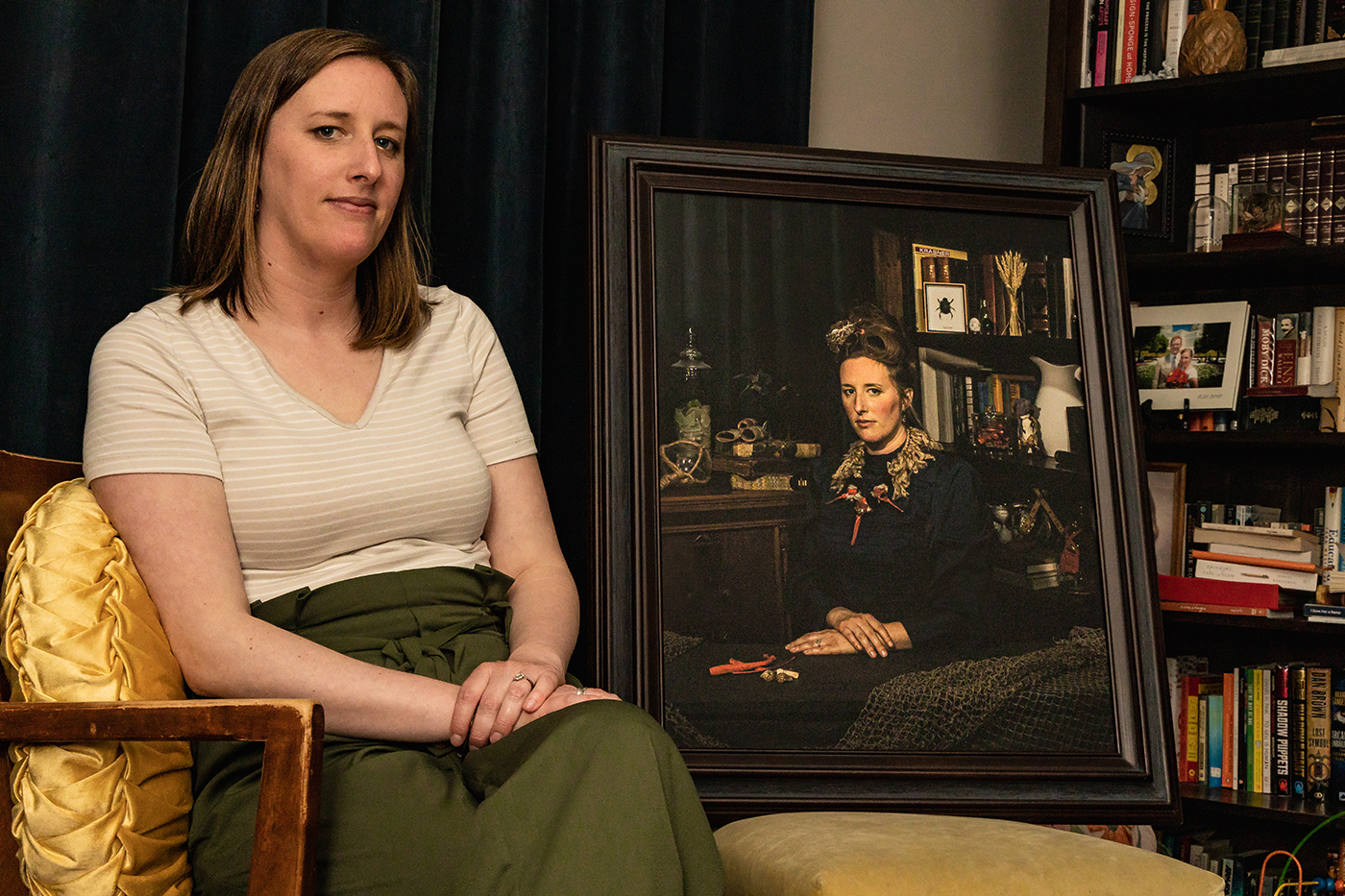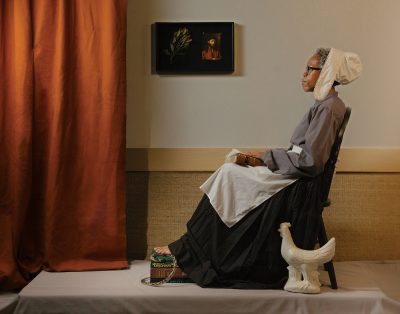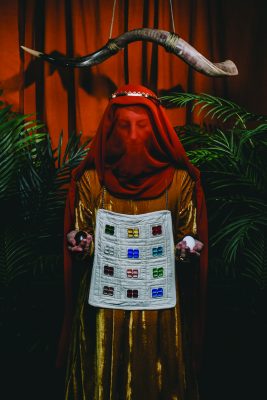
Megan Knobloch Geilman and Works of Translation: The Art of Symbology
Art

As an artist, Megan Knobloch Geilman has worked in many mediums of artistic expression. Self-described as a “jack-of-all-trades/master-of-none,” Geilman has a wide range of experience that varies from graphic design, interior design and ultimately tableu—which has marked a shift in her career. Her work through various mediums has allowed her to create pieces that are mesmerizing, rounded and built up from her previous experience in other fields. “I dabbled for so long and worried that I would never settle into a recognizable style,” Geilman says. “The shift to tableau work came on suddenly, and luckily, all that messing around turned out to be essential.”
Geilman’s pieces heavily rely on the orchestration of objects, which is similar to her design work. In Works of Translation, her first artistic showcase, the photo series is indicative of LDS history and the symbolic translation of secular and non-secular items that are used to convey specific depictions in a post-modern context. Geilman’s photos showcase the vibrancy of historic Mormon renderings cross-referenced with other works of art through her meticulous placement and strategy. She notes the spirituality that’s layered within this process. “Often when I have an idea for an object but have no idea where I’ll find it, I’ll feel led or prompted to a certain store, or to use a certain search term online that will help me find what I had in my head. I’ll often call these ‘little miracles,’ even though they don’t feel ‘little’ to me,” she says. Beginning with a rough concept of what references she wants to use, Geilman will meditate on an idea to find out what she needs to make the piece come to life.
Geilman notes that the LDS faith carries traditions of pageantry and symbolic learning through temple worship.

As the Art Director for Works of Translation, her role encompasses many facets. “The main way I look at my work is sort of a single-frame movie. All the information is there in one shot,” she says. “To do this, I have to approach the whole piece with a production mindset—securing a shoot location, gathering props, coordinating the models and the photographer [and] scheduling the equipment rental so that everything can come together on the day of the shoot.” Geilman notes that the LDS faith carries traditions of pageantry and symbolic learning through temple worship, so finding parallels in other artistic references through symbology felt natural. Her pieces in Works of Translation exemplify this notion. The orchestration of the models, their dress and the items they hold are indicative of how Geilman uses symbolism to express Mormon narratives. The photos are often posed to resemble other famous images.
Though Geilman refers to all her pieces as being miracles to her, she expresses that “The Dollhouse” and “The Queen of the South” are especially vulnerable and emotive. “The Dollhouse” is a vivant yet bleak work showing a young man—dressed in church attire—distanced from a white house on a hill. We don’t see his expression, but as viewers, the feelings of longing and separation are palpable. Geilman says, “[The Dollhouse] is a bit of a love letter to LGBTQ Mormons or anyone that’s felt they’ve had to leave the Church.”
“I’m still working on getting comfortable with vulnerability and sharing these deeply personal aspects of my faith.”

Megan Knobloch Geilman, “Queen of the South,” February 2014, from Works of Translation Series. Copyright (C) Megan Knobloch Geilman. Photography by Samantha Zauscher.
While some of her works feature decorative backgrounds and symbolic expression, others are more barren. In “Jane,” a woman’s profile is present among a few objects. The image seems simplistic, yet it portrays depth as the symbolism is unraveled. A reimagining of James McNeill Whistler’s famous painting “Whistler’s Mother,” Geilman depicts an early African-American Mormon settler and the struggles she endured. The title refers to the universal moniker of Jane Doe. Many African-American Saints’ early spiritual efforts remain unseen due to the Mormon Church’s prohibition of African-Americans from obtaining the priesthood and participating in temple ordinances up through 1978. “As a white woman, I don’t feel I can comment much on the experience of African Americans in the Church, but this piece for me was a way to say ‘I see you. I honor you,” Geilman says.
As an active member of the LDS church, Geilman feels apprehension approaching certain subject matter. “I’m not one for stirring the pot, and it’s taken a lot of practice to be able to actually speak about my work,” she says. “I’m still working on getting comfortable with vulnerability and sharing these deeply personal aspects of my faith.”
Geilman touches on topics including motherhood, death and transformation. She also delves into more controversial topics among Latter-day Saints, such as female priesthood. She says, “That’s one of the powers of art—a safe place to consider perspectives that are not your own, and then you can digest them at whatever pace you need.” Be sure to view Works of Translation in person. The show is currently on display at the Writ & Vision Gallery in Provo. You can also view Geilman’s work online.